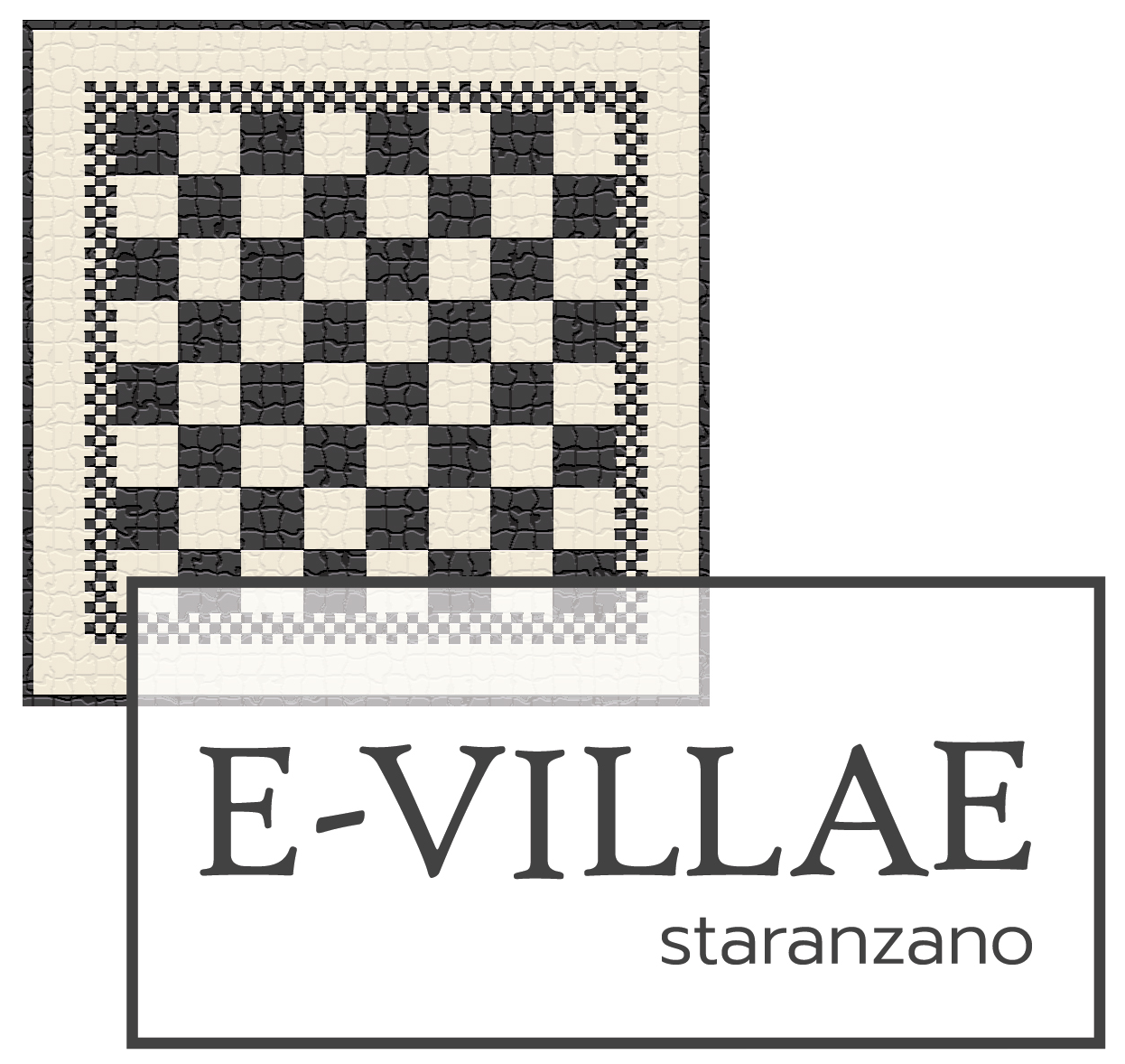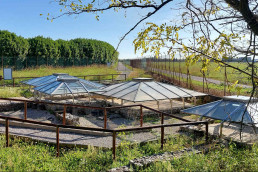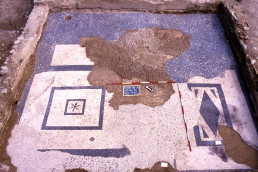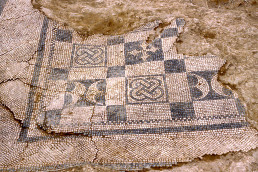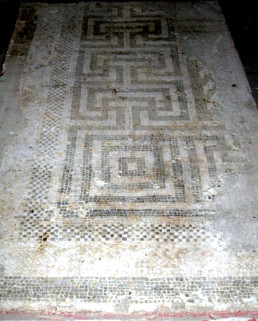The villa in Ronchi of the Legionaries
Only the southeastern limit is known of this Roman-era rustic villa, which has been excavated only partially (covering an area of about 600 sq. m.), as the western part lies within the airport area. The archaeological site was identified in 1987 as a result of aqueduct work and was investigated on several occasions until 2007.
The villa, built around the middle of the 1st century BC, had three main construction phases and was finally destroyed by fire in the 3rd century AD.
The abandoned structures were later covered by the overflow of a watercourse (perhaps a branch of the Isonzo) that then flowed a short distance away. The U-shaped plan of the building was characterized by a series of rooms arranged,at different heights, around a central courtyard: the pars urbana, intended for the residence of the dominus (the owner), was located at a higher elevation. Reception rooms,characterized by floors with polychrome mosaics or black/white geometric patterns, faced outward on a columned portico facing the countryside or perhaps a garden.
Also in this area of the villa, a small room was equipped with a heating system with a suspensurae, brick columns that raised the floor allowing the passage of hot air coming from a nearby boiler.
The pars rustica, where the main production and processing activities of agricultural products took place was located across the courtyard. Here the rooms were smaller in size: some of them were paved with terracotta bricks.
The Gorgat mansion
In the area of the Gorgat, south of San Canzian d'Isonzo, work carried out in 1928 by the Brancolo Canal Reclamation Consortium brought to light, on the left bank, wall structures and a valuable mosaic floor with black and white tesserae and a meander frame; these remains probably refer to the residential part of a rustic villa.
Research conducted in the area in 1993 and 2006 allowed the collection of additional data, particularly on the dating of the complex, which can be attributed to a period ranging from the 1st to the 3rd century AD.
The extent of the villa is not known, but the discovery on the surface, after plowing, of a large amount of archaeological material-mostly building material-even on the other bank of the Brancolo canal suggests that the villa was large in size and extended further southward.
